After my ramblings in the last post I never actually said where I ended up. Well I decided to by-pass Durress and landed on a mosquito infested grey sandy beach for the night.
In the morning a man came over with a German shepherd that looked like it wanted to eat me, and told me to bugger off, waving his hand. By the look of the ostentatious house on the cliffs above, CCTV everywhere, gleaming mercedes parked outside, this was some kind of big hitter’s beach. The dog circled around me and I asked the man to control it, nervous it would spring on me any second.
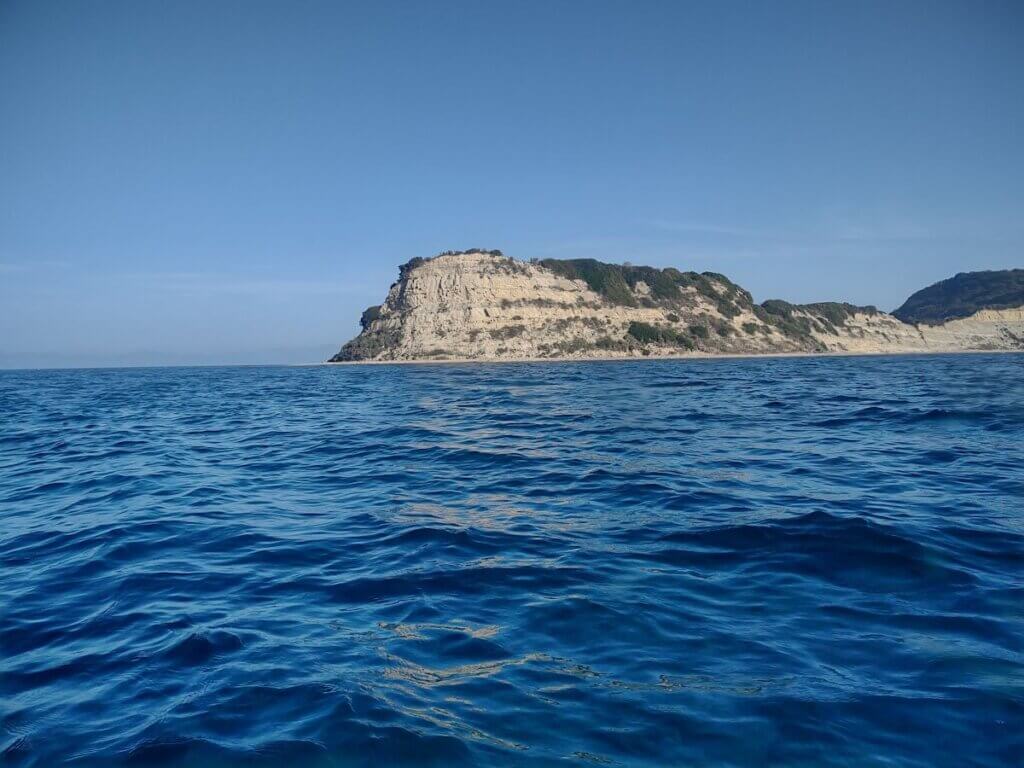
I paddled around a headland over shallow reefs and started crossing another featureless bay, aiming for the Cape of Rodon. Durress is the closest port to Bari, they’re at about the same latitude, and my original plan was to get the ferry to Durress. Well I’m glad I didn’t, because I would’ve missed out on all my adventures further south and missed the most beautiful part of the coast – from Sarandë to Vlorë.
I arrived at the Cape and stopped on a pretty little beach where there was a 15th century church, the church of St Anthony, it’s grassy surroundings a haven of peace amongst sinister reminders of Albania’s more recent past – bunkers everywhere, some built in to the cliff, one of which had been transformed in to a restaurant.
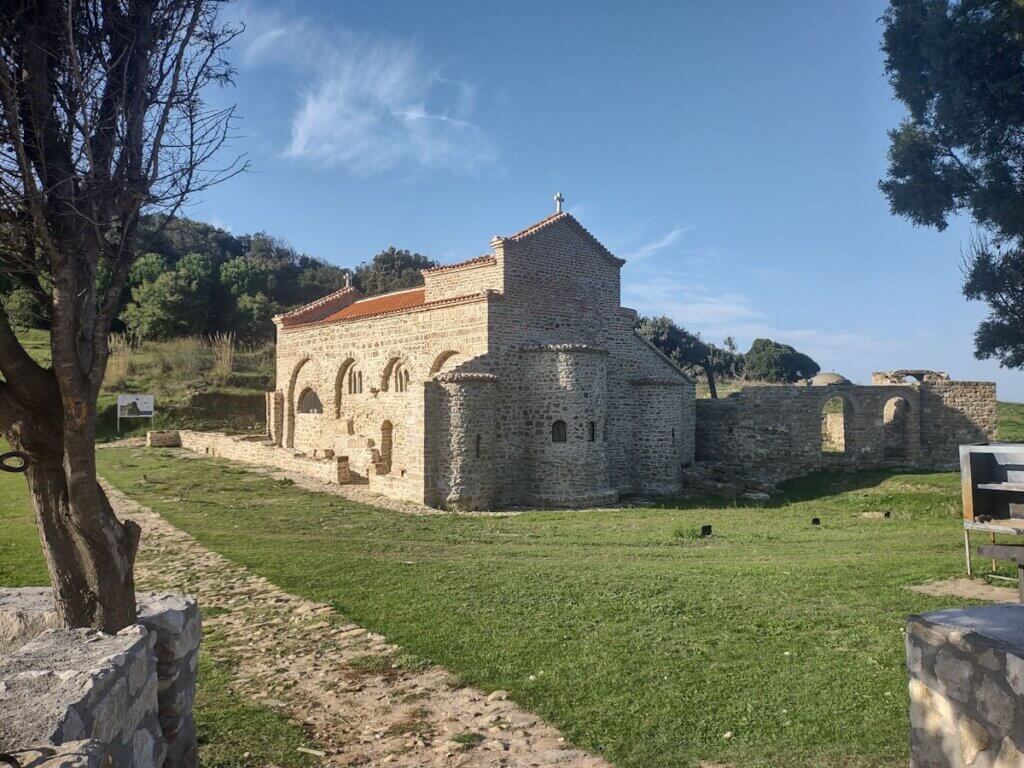
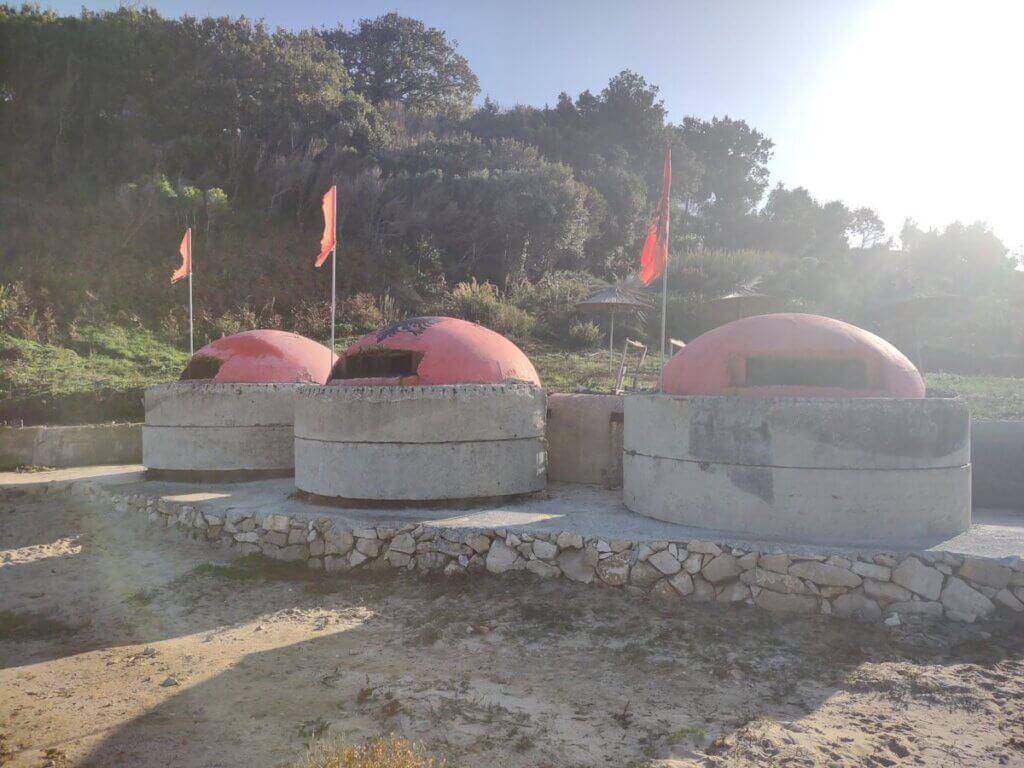
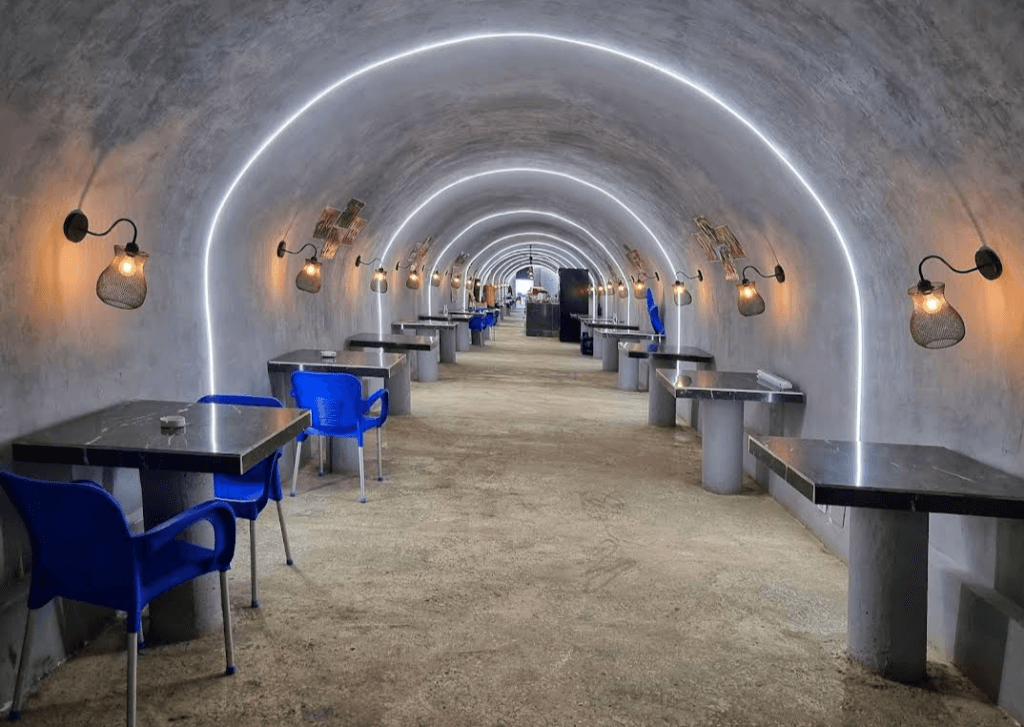
It seems like Albania doesn’t really know how to deal with it’s past – in some ways people just want to forget these awful times and move on, but now this dark past offers opportunity – it’s the reason many tourists are interested in visiting. It would be disrespectful to those that suffered under Hoxha to not educate people about what happened, but the tourism side feels uncomfortable. Not enough time has passed.
Churches like this are rare in Albania. In 1967 Hoxha declared the country to be the world’s first atheist state and all religion was outlawed. Those who didn’t confirm were tortured and executed and all places of worship were taken by the state, many destroyed.
Today, 60% identify as Muslims, throughout the country, and 15% Christian, orthodox in the south and Catholic in the north. This is the legacy of the roman and ottoman empires.
Albania is a great example of religious harmony. Is this because people are just grateful to practice any faith after the oppression of Hoxha? Or is it because beliefs aren’t extreme – muslims don’t follow traditional Islam customs like wearing the veil or not eating pork.
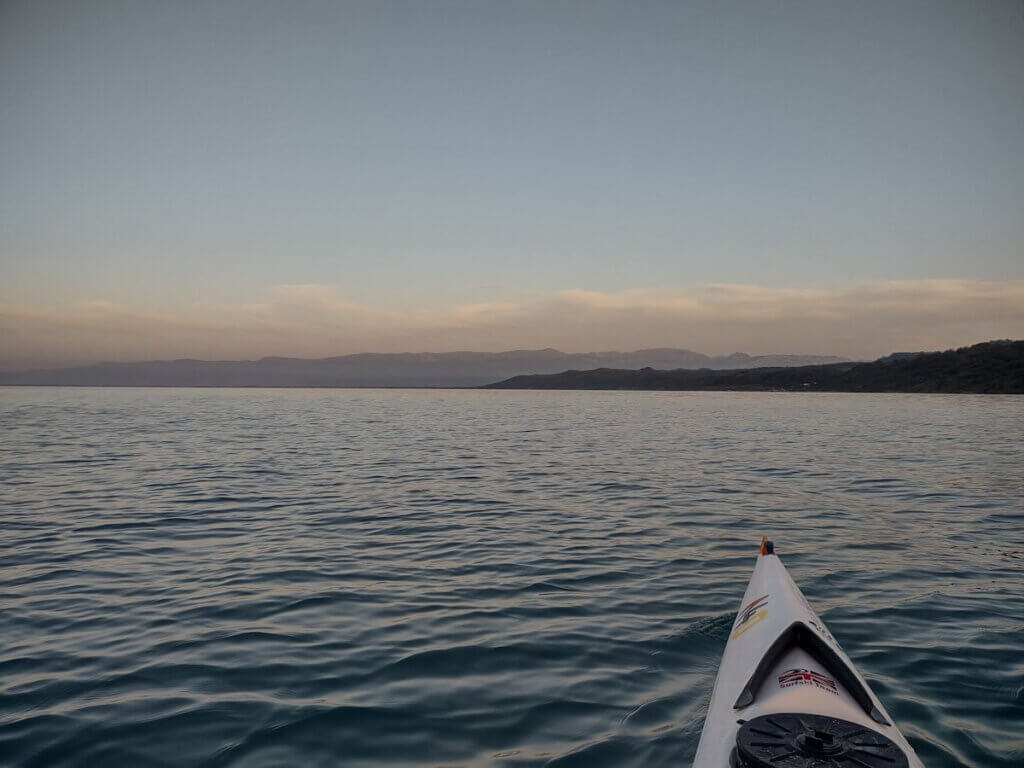
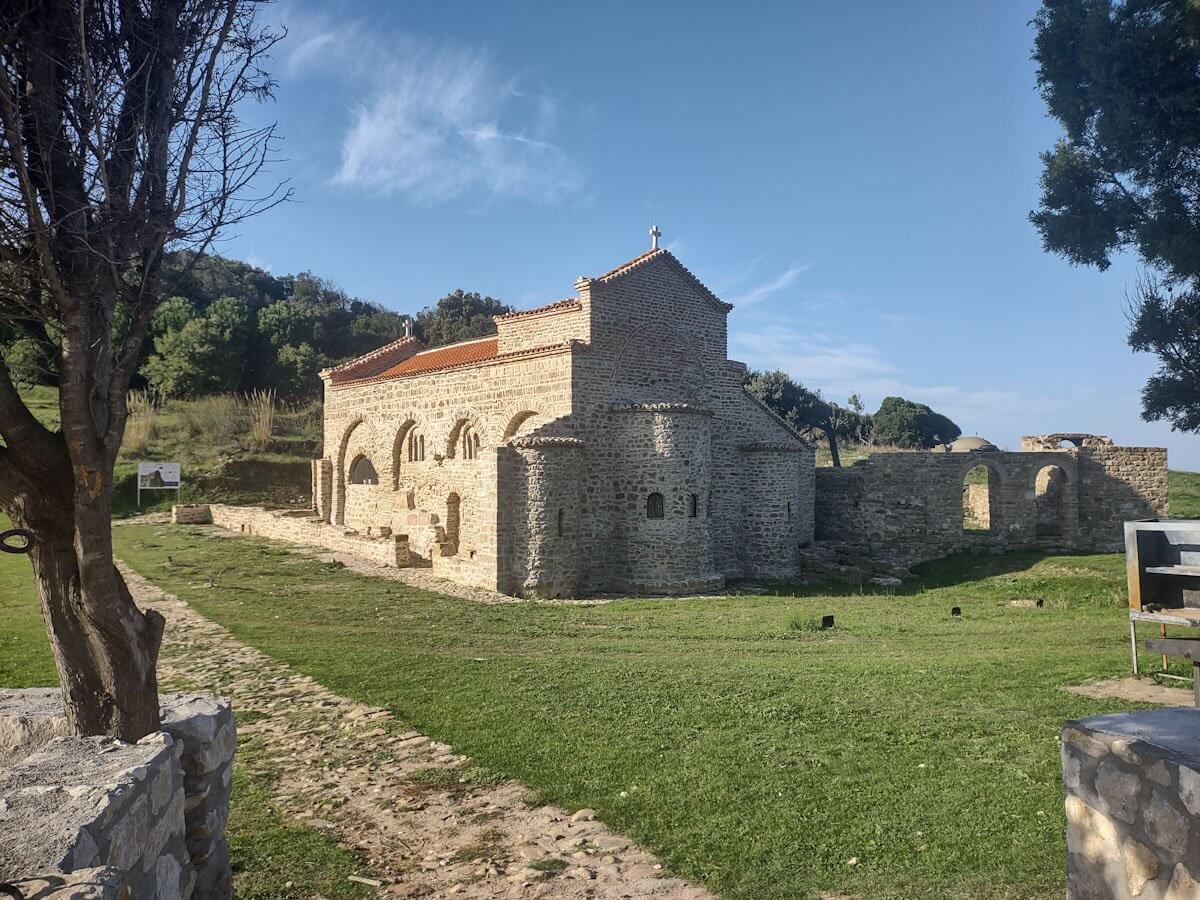
Leave a Reply